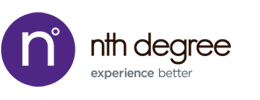Like you, I’ve read dozens of articles about what changes will be made to enable large shows to return – temperature checks, rapid testing, cleaning procedures, social distancing rules, etc. But I haven’t heard anyone talking about the impact of these changes on exhibiting companies.
There are several changes I see in store, and I think you should start planning and, more importantly, budgeting for them.
- Show Movement to Larger Convention Centers – In order to accommodate the social distancing requirements for their conference programs and exhibit halls, shows will need more space - more meeting rooms, more exhibit space, and more room to facilitate attendee movement as they are waiting for sessions or entrance to the exhibit floor. This will benefit the cities with the larger facilities and will hurt the convention centers that were stretched with the larger events before. I see Orlando as the first city to host the large-scale shows, which is good as the exhibitor costs are relatively low. Chicago, Las Vegas and San Francisco also have the space, it just depends on how quickly they are ready and allowed to host. Organizers will have to go where there is room to accommodate them, and that could impact your travel and exhibit management budgets.
- Significant Schedule Changes– I believe the only way for show organizers to facilitate content delivery, networking and exhibition business is to extend the overall length of the event. This doesn’t mean attendees will now attend longer events, what it means is the organizer will spread out the schedule to allow for different groups of attendees to attend for a shorter period. What this means for exhibitors is you have to be there and ready for the entire duration, while attendee participation is staggered. You may have to staff your exhibit for more than the 3 – 4 days that conventional tradeshows were open, while attendees may be divided into groups and told when they can attend the exhibits and when they can attend conference sessions.
How they decide to do this will be interesting…they could do it alphabetically, geographically, or even first-come, first served – those who register first get first choice of an exhibit hall time slot. Imagine if they did it by title where Day 1 on the show floor is attendees with C-level or VP titles and Days 2-4 are reserved for different titles. That would certainly be an interesting way to help you weed through the attendees and get right to your decision makers, wouldn’t it?
- Longer show hours– Similar to the length of the event, show floor hours may increase to accommodate the attendees in lower space capacities. You may have to send more team members to staff the booth and/or spend more money on temporary staffing in the show cities if the exhibits are now open 8:00 am – 8:00 pm.
- Cleaning services added to the budget - If you haven’t been already, expect to be asked by your company leadership what your team will have to do to make staff and attendees comfortable participating in shows and conventions. While much of this responsibility lies with the show organizers and supplier partners, you will need to consider additional cleaning costs during show hours and after the show closes each night. Will you need surfaces sanitized every 30 minutes by an on-call team? Do you want all giveaways wiped before being handed to attendees? Will food and beverages need to be pre-packaged vs. “open containers” at a higher cost?
- Increase in show services costs– While this one is hard to predict, longer show runs in large convention centers with high demand could reduce time allocated to move-in and move-out. This could shift more of exhibit installation and dismantle to overtime hours. While we all work toward installing using as many straight time hours as possible, these schedules might be squeezed as convention centers try to turn the buildings over as quickly as possible to accommodate the new event schedules.
So how do you budget for these increased expenses? Nth Degree Senior Account Director Maureen Burke suggests when planning for Q4 and 2021 to increase your T&E budget by 15% and your exhibit management budget by 10-15%. It is not, however, an exact science as you may not know the exact plans/locations for 2021 events when you are building your budget. Use this as a guide that can be adjusted when show schedules, locations and dates are finalized.
These necessary changes to our shows and conventions will allow them to happen – and may even fast-track the process. So look at the budget impact as a necessary evil – while they require some additional budget dollars, they will facilitate getting back to business which is why the shows are so important to us in the first place.


 404-296-5282
404-296-5282 3237 Satellite Blvd
3237 Satellite Blvd